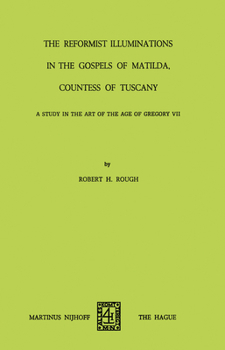The Reformist of Illuminations in the Gospels of Matilda, Countess of Tuscany: A Study in the Art of the Age of Gregory VII
The Gospels ofMatilda, Countess ofTuscany, is a manuscript written and illuminated in Northern Italy toward the end ofthe eleventh century. A credible fourteenth century document states that it was presented by the Countess to the Benedictine monastery of Polirone, near Mantua. In the manuscript's pictorial cycle, the Cleansing of the Temple and the scenes related to it are iconographically extra- ordinary. An understanding of them must begin with a study of their ideological sources, closely related historicfigures, Medieval writers who employed the figure ofthe Cleansing ofthe Temple, and the political-social movement ofthe Patarines. Then the Matilda Gospels' illuminations will stand revealed as the key artistic expression of the Gregorian Reform and as a prime document of some of the most important events and ideas ofthe Middle Ages. II. ART AND THE REFORM OF THE ELEVENTH CENTURY Church reform in the eleventh century was a heroic engage- ment. Norman Cantor calls it one of the four great world- revolutions of Western history. The authority of the papacy, theindependenceofthechurch, andtheveryleadershipofMedie- val society were its mortally contested issues critical both to history and to political theory.2 Gregory VII and Matilda of Tuscany were but two of the vivid personalities among its partisans. But in the history ofart the struggle has been nearly invisible.
Format:Paperback
Language:English
ISBN:9024715350
ISBN13:9789024715350
Release Date:February 1974
Publisher:Springer
Length:64 Pages
Customer Reviews
0 rating





